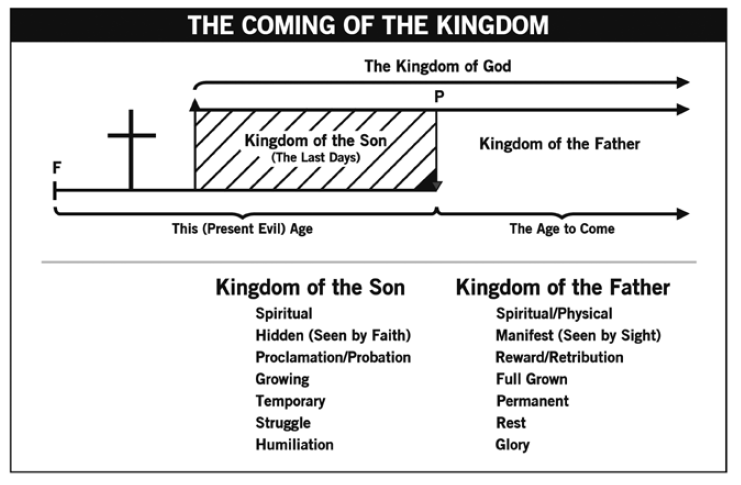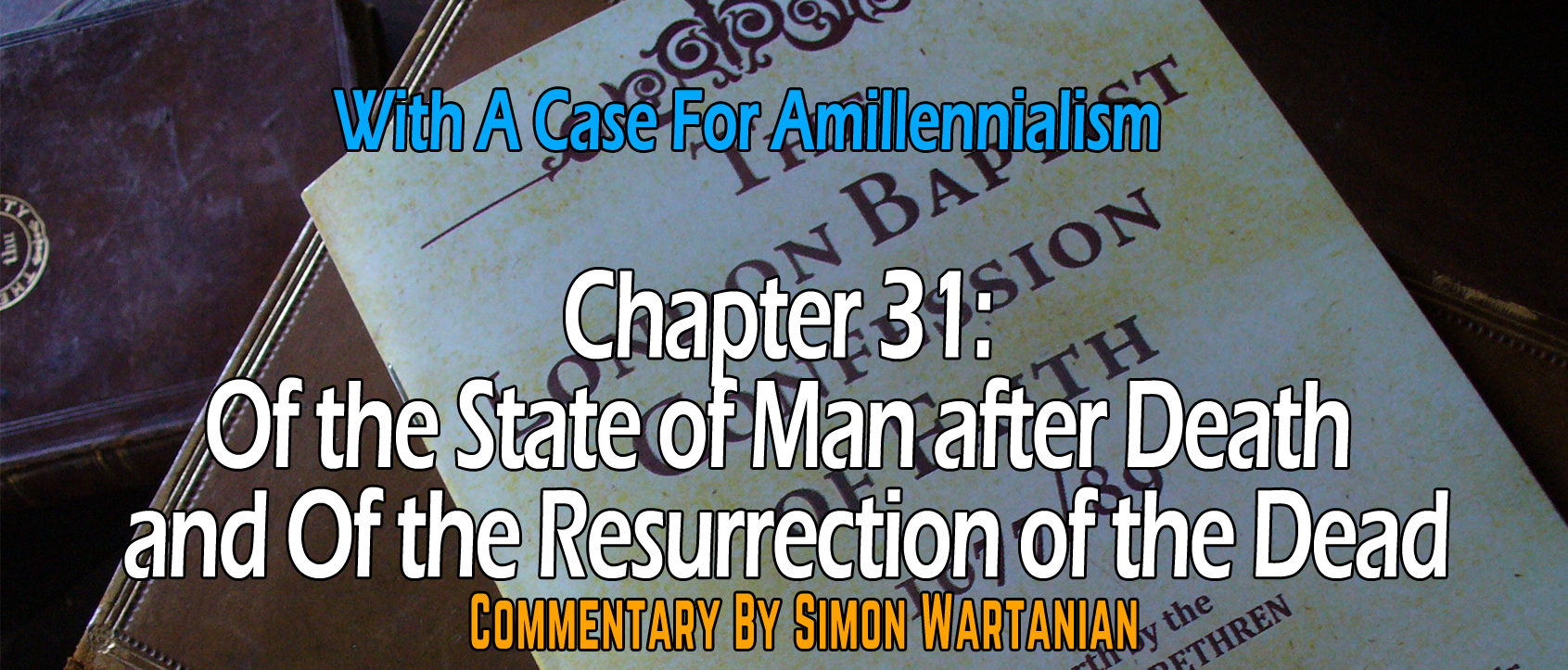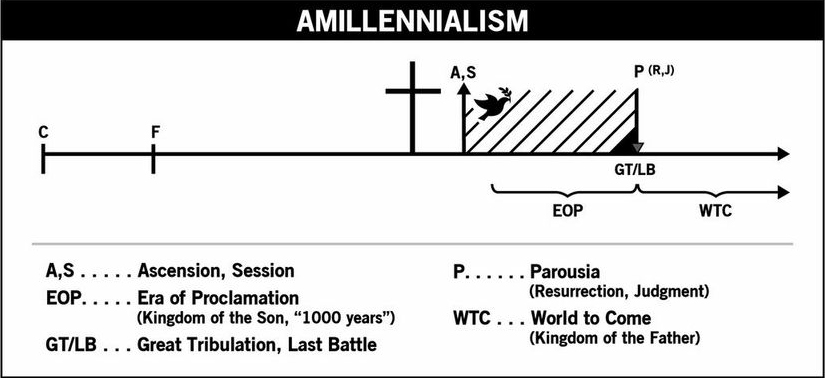We see that the Kingdom of the Son is spiritual, consists of His heavenly reign and includes both the righteous and wicked in its sphere. But the Kingdom of the Father is eternal, physical, post-resurrection, post-judgment and consummated. We believe that Holy Writ teaches that the Kingdom of God is revealed in two stages and no more. One stage is temporal and spiritual, while the other is consummate, physical and eternal. For the interested student, I direct you to chapter 9 of Dean Davis’s excellent book The High King Of Heaven. He does a very good job and spends a considerable amount of time diving into many passages of the New Testament which teach the two-stages of the coming of the Kingdom. The following is a diagram provided by Dean Davis:

The Second Coming of King Jesus
There are three Greek words used in the New Testament to speak of the Second Advent of our King, and there is the expression of “the day of the Lord.” We will take a look at each of these things.
Parousia
Amillennial eschatology teaches a singular, visible, physical, and glorious coming of the Lord Jesus Christ at the end of this Present Age. The word παρουσία (Parousia, G3952) means “presence” and “the coming, arrival, advent”[11], it is very often used in reference to the Second Coming of Christ, hence the popular word for the Second Coming is the Parousia. Acts 1:11 teaches us to expect the Lord Jesus to bodily return as He bodily went to Heaven. He will not return spiritually in the future, but in the selfsame glorified body in which He ascended to Heaven. He will come in glory and with His angels and saints (Matt. 25:31; 1 Thess. 3:13). He will come for the purpose of saving His people from this wicked world (Heb. 9:28), to be glorified in His saints (2 Thess. 1:10), and to judge the wicked (2 Thess. 1:5-9) among other things. Let us take a look at how this word is used in the New Testament.
Matthew
In Matthew 24:3 the disciples connect the coming of Christ with the end of the age saying, “what will be the sign of your coming [παρουσίας, parousias] and of the end of the age?” Throughout the Olivet Discourse (Matt. 24-25), it does not seem to me that Jesus points out that the understanding of the disciples was wrong in connecting the Parousia with the end of the age. But obviously the nature of the coming which they had in mind was wrong. The word occurs three more times in the same chapter, “the coming of the Son of Man” (Matt. 24:27, 37, 39). The reference is definite as indicated by the definite article attached to this Parousia (ἡ παρουσία τοῦ υἱοῦ τοῦ ἀνθρώπου, he parousia tou huiou tou anthropou). This is not referring to a spiritual coming or a spiritual presence, but a definite advent of the Son of Man.
Paul
In 1 Corinthians 15:23, the Parousia is connected to the time of the resurrection and transformation of the saints. In 1 Thessalonians 2:19, the Parousia is said to be a day when Paul will be proud of the Thessalonians before the Lord Jesus. In 1 Thessalonians 3:13, Paul prays that the Lord may establish the hearts of believers as blameless at the coming of Christ, indicating that it will be a day of judgment when the Lord Jesus returns, so that believers will not be condemned at His coming, but be glorified with Him (cf. 1 Thess. 5:23). In 1 Thessalonians 4:15, it is said t...








